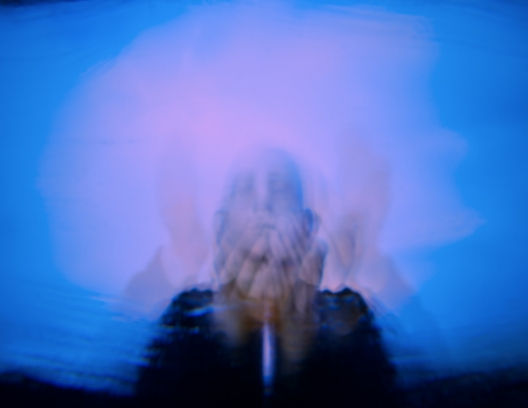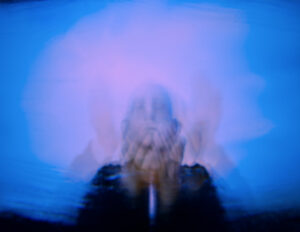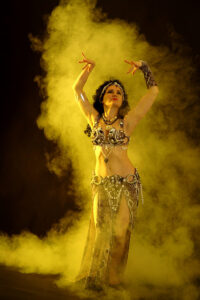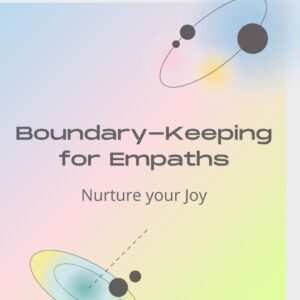
by user_dd | Feb 26, 2019 | Alchemy, Transitory Thoughts
[fusion_builder_container hundred_percent=”yes” overflow=”visible”][fusion_builder_row][fusion_builder_column type=”1_1″ layout=”1_1″ background_position=”left top” background_color=”” border_size=”” border_color=”” border_style=”solid” spacing=”yes” background_image=”” background_repeat=”no-repeat” padding_top=”” padding_right=”” padding_bottom=”” padding_left=”” margin_top=”0px” margin_bottom=”0px” class=”” id=”” animation_type=”” animation_speed=”0.3″ animation_direction=”left” hide_on_mobile=”no” center_content=”no” min_height=”none” last=”no” hover_type=”none” link=”” border_position=”all”][fusion_text columns=”” column_min_width=”” column_spacing=”” rule_style=”default” rule_size=”” rule_color=”” hide_on_mobile=”small-visibility,medium-visibility,large-visibility” class=”” id=””]
 In the last post of this series, we covered the second stage of alchemy: dissolution. We also reminded ourselves that it’s important to remain non-attached. At the same time, you will not complete the alchemy process powerfully without uncovering your ‘burning desire’ that drives you towards your goal. Without the attractive force of this desire pulling you, you are in danger of getting lost in the journey of this alchemical transformation. Finding your way out is impossible until a concrete goal emerges.
In the last post of this series, we covered the second stage of alchemy: dissolution. We also reminded ourselves that it’s important to remain non-attached. At the same time, you will not complete the alchemy process powerfully without uncovering your ‘burning desire’ that drives you towards your goal. Without the attractive force of this desire pulling you, you are in danger of getting lost in the journey of this alchemical transformation. Finding your way out is impossible until a concrete goal emerges.
Into a million pieces
As life continues to throw curve balls, we get thrown out of our normal routine, and start to see what the essence of our life is. Normally, this essence gets drowned in the day-to-day dross of our waking life, and sometimes we access it through the subconscious when we sleep. But overall, we are usually unaware of the influence this essence has on our thoughts, behaviors, habits, and outcomes in life.
When we get out of our normal routine, or try to alter our life in some way (like learning a new habit), it’s not uncommon for anger, resentment, frustration, and depression to emerge. We can often have trouble with emotional boundaries as well, not being sure exactly what we want, which has the unfortunate bonus feature of making us more prone to conflict in our relationships.
Have you ever felt so emotionally fragile like you could burst into a million shards of glass on the ground at any moment? That’s separation.
There is perspective to be gained by separating and distinguishing the parts of our life that often go unnoticed. Human beings are meaning making machines, and we go around constantly making up stories about what others think of us, how otherwise meaningless actions have ruined our day, and what we’re going to do about the past when we act in the future. Most times we are not actually present to (and appreciating) what is!
Taking a moment to see each of those stories for what they are, mental objects that take up time and energy, that drive our thoughts, opinions, and actions. They enable us to move those otherwise subconscious drives to the conscious mind where we can evaluate and choose our relationship with them, rather than be driven by them. Freud was a big proponent of this theory of unconscious drives, and ended up taking it further, forming the concept of the id (or instincts/drives) as opposed to the superego (or conscience), which, from a metaphysical perspective, is necessarily aligned with our Higher Self.
In this stage of alchemy called separation, we separate out the parts of the whole that we were not noticing before, and we look at them. We start to see all kinds of relationships we never saw before. We compare and contrast the different parts of ourselves that make being a human so rewarding, giving color to our experience and rhythm to our steps. We have to have the honesty and integrity required within ourselves to acknowledge those parts of us that we don’t necessarily like before we can move towards wholeness.
Seeing the unseeable
After a particularly nasty breakup with his ex, Riley basically repressed her feelings for a year and it took her awhile to feel open to dating again. Understandably, when she put herself out there to date again, she had all kinds of caveats. “I’m never dating that kind of person again,” she decided. So she evaluated every prospective partner that came into her life from the lens of that list of traits she’d rather like to avoid, lest she find herself in the same position as last year, emotionally bruised and battered, closing herself off again to the happiness she was sure she could find if she just had another (not so crazy) partner.
She had one particularly memorable dating experience where, after dinner, she was feeling particularly attracted to her date, and decided to invite him over to her house for an after dinner aperitif. No sooner had they entered then the comments began. “Oh, what a nice space. I really like your sofa. How long have you lived in this house? Where did you get those curtains?” Riley was beside herself, one of the things on her list was no critical comments, because she felt emotionally shunned by her ex, who was always evaluating and criticizing her. Riley felt like she could never live up to his standard, so she ended the relationship.
Now it was happening all over again, except that it was happening with each person she became close with. Once the intimacy started to increase, she would start to get these comments. First they were relatively innocuous, but then later, there was some tension or even outright conflict. Riley didn’t know how to resolve this recurring issue.
One day, while at coffee with a friend, Riley was detailing how her most recent date wasn’t going to cut it again, when her friend stopped her and leaned over to say, “Riley, don’t you see a pattern here. Whenever you want to get intimate with someone, you immediately close yourself off, which defeats the whole purpose!”
Riley started to look at her most recent dates, and she was flabbergasted. Her friend was right, she always reacted with resistance whenever anyone got close enough to ask her a question that really mattered. She withdrew as soon as people were just getting to know her. This was no way to create a relationship.
Once Riley saw this in her behavior, she was able to catch herself going down that trail, and decided to she her experience differently. “No, he’s not trying to criticize me, he’s just curious because he doesn’t know! I haven’t shared that part of myself with him yet.”
After this, Riley was able to have a relatively long-term relationship again. Though still looking for that life partner, she is enjoying emotionally-fulfilling relationships both with her intimate partners and her friends.
Reflective Quote:
“He [William S Burroughs] has no patience for my kind of neurosis, I know… But since then I’ve been facing my nature full in the face and the result is a purge.”
― Jack Kerouac, Jack Kerouac and Allen Ginsberg: The Letters
[/fusion_text][/fusion_builder_column][fusion_builder_column type=”1_1″ layout=”1_1″ background_position=”left top” background_color=”” border_size=”” border_color=”” border_style=”solid” spacing=”yes” background_image=”” background_repeat=”no-repeat” padding_top=”” padding_right=”” padding_bottom=”” padding_left=”” margin_top=”0px” margin_bottom=”0px” class=”” id=”” animation_type=”” animation_speed=”0.3″ animation_direction=”left” hide_on_mobile=”no” center_content=”no” min_height=”none” last=”no” hover_type=”none” link=”” border_position=”all”][/fusion_builder_column][/fusion_builder_row][/fusion_builder_container]
by user_dd | Jul 29, 2015 | Community Conversations
Some of you may have read the prequel blog post to this one, which talked about the female roots of certain forms of spirituality and debunked the idea that only men have been spiritual leaders throughout history. This time, we’re going to look at some specific Masters – all women – who had an important impact in the spiritual growth of our species.
MAITREYI (circa 800-500 BCE)
A keen scholar of the Indian Vedas and one of the only ancient female rishis (sages), Maitreyi helped to evolve Vedic philosophy, which can be thought of as the foundation upon which Hinduism was built. She was wife to the holy man Yajnavalkya, and shared in much of his wisdom.
Maitreyi wrote 10 hymns in the Rig Veda, an ancient Indian canonical text, and also the Maitreyi Upanishad, which is part of a compilation of sacred scriptures. After separating from her husband and beginning an ascetic life, Maitreyi became a traveling sage, offering her knowledge wherever she went. Here are some excerpts from the Maitreyi Upanishad, which contains elegant wisdom:
If you are a seeker after liberation, remember: worshipping God in idols of stone, metal, jewels, or clay only brings repeated births; and for that reason, worship only [fusion_builder_container hundred_percent=”yes” overflow=”visible”][fusion_builder_row][fusion_builder_column type=”1_1″ background_position=”left top” background_color=”” border_size=”” border_color=”” border_style=”solid” spacing=”yes” background_image=”” background_repeat=”no-repeat” padding=”” margin_top=”0px” margin_bottom=”0px” class=”” id=”” animation_type=”” animation_speed=”0.3″ animation_direction=”left” hide_on_mobile=”no” center_content=”no” min_height=”none”][the deity in] your own heart and no other.
I am me; and I am the supreme. I am Brahman, and I am the origin of all. I am the guru of the whole world and I am all over the universe. Such am I.
The world of changes is the mind, so purify the mind.
MARY MAGDALENE (circa 1-72 CE)
 Often (erroneously) associated with a prostitute, Mary Magdalene – or Mary of Magdala – is considered by some scholars to have been Jesus of Nazareth’s most adept Disciple. In the Bible, she is one of the only Disciples who witnessed Jesus’ death, and the first to see his resurrection. Yet, in the esoteric manuscript The Gospel According to Mary, which is considered to be an early Christian text, Mary testifies to an enlightening vision she had of her teacher; one sees clearly the special role she played in the development of Christianity.
Often (erroneously) associated with a prostitute, Mary Magdalene – or Mary of Magdala – is considered by some scholars to have been Jesus of Nazareth’s most adept Disciple. In the Bible, she is one of the only Disciples who witnessed Jesus’ death, and the first to see his resurrection. Yet, in the esoteric manuscript The Gospel According to Mary, which is considered to be an early Christian text, Mary testifies to an enlightening vision she had of her teacher; one sees clearly the special role she played in the development of Christianity.
In this apocryphal scripture, Mary inspires the grieving Disciples after the Crucifixion, reminding them of Christ’s wisdom and motivating them to deliver its message. This segue’s into her incredible vision, and the potent words she heard and passed on:
The soul answered and said, “I saw you. You did not see me nor recognize me. I served you as a garment and you did not know me.” (Mary 8:11)
And the soul said, “Why do you judge me, although I have not judged?
I was bound, though I have not bound.
I was not recognized. But I have recognized that the All is being dissolved, both the earthly things and the heavenly.” (Mary 8:15-17)
Some of the Disciples, such as Andrew and Peter, didn’t like what Mary had to say. They were particularly upset that a woman had been so close to Jesus and learned things that were seemingly kept from them.
Tradition holds that in the latter part of her life, Mary spent 30 years in deep prayer and meditation in the cave at La-Sainte-Baum (dedicated to her) in what is now France. St. Augustine referred to Mary as the Apostle to the Apostles. She very well may have possessed a profound knowledge of the Christian Mysteries few of the Disciples grasped.
RABI’A BASRI (circa 717-801 CE)
Rabi’a al-Adawiyya, or Rabi’a Basri, was an Islamic Sufi mystic and saint, and regarded as one of the most important Sufi poets. The Prophet Muhammed is believed to have visited her father with these words:
Your newly born daughter is a favorite of the Lord, and shall lead many Muslims to the right path.
At one point a slave, Rabi’a was supposedly released by her master when he saw intense light surround her while she was in prayer. Another story claims she was released due to the sincere plea she made to serve God, which her master overheard. She became a desert ascetic, with few possessions, and with many disciples.
Rabia helped to establish the doctrine of Divine Love, and, in particular, the concept that one should fulfill God’s Will without desire for reward or fear of punishment (an idea still new to many Sufis). Her poetry is lucid and potent, espousing such teachings and much more.
O Sons of Adam, from the eye, there is no way-station to the Real. From the tongue, there is no path to Him. Hearing is the highway of complainers. Hand and foot dwell in perplexity. The matter falls to the heart. Strive for a wakeful heart.
SUN BU’ER ( 1119-1182 CE)
1119-1182 CE)
Not studying the Tao until age 51, Sun Bu’er nevertheless became one of the Taoist Seven Masters of Quanzhen in China (and the only woman). After 12 years of intense spiritual practice, she is said to have attained Enlightenment and Immortality. Legends abound about her powers, such as performing exorcisms, transforming sticks into people, bathing in boiling water, and being able to turn stones into gold. The city of Loyang, where Sun Bu’er trained for years, claims she blessed it with protection and abundance; a statue was erected in her honor.
Sun Bu’er grew a large following of disciples, and she added new insight into Tao teachings by helping women learn how to harness their energies for spiritual development, which was a secret mostly taught to men up to that point. She wrote two important works on Chinese inner alchemy and wisdom of the Tao. Here is her poem called “Refining the Spirit”:
The relic from before birth
Enters one’s heart one day.
Be as careful as if you were holding a full vessel,
Be as gentle as if you were caressing an infant.
The gate of earth should be shut tight,
The portals of heaven should be first opened.
Wash the yellow sprouts clean,
And atop the mountain is thunder shaking the earth.
CONCLUSION
These are just a few examples of extraordinary women who have made important contributions to the Perennial Philosophy. There are many others: Hypatia of Alexandria, Teresa of Avila, Alexandra David-Neel, Sri Sarada Devi, Helena Petrovna Blavatsky, Mata Amritanandamayi, etc. It is pretty clear that, yes, women can and have been spiritual leaders. The discrimination toward women in certain religions today is a sad scene. By recognizing these great female Adepts, we help to promote the potential latent in every human being, regardless of gender. Spiritual Genius is the birthright all of us, who are made in the Image of God.
[/fusion_builder_column][/fusion_builder_row][/fusion_builder_container]
by user_dd | Jun 29, 2015 | Community Conversations
[fusion_builder_container hundred_percent=”yes” overflow=”visible”][fusion_builder_row][fusion_builder_column type=”1_1″ background_position=”left top” background_color=”” border_size=”” border_color=”” border_style=”solid” spacing=”yes” background_image=”” background_repeat=”no-repeat” padding=”” margin_top=”0px” margin_bottom=”0px” class=”” id=”” animation_type=”” animation_speed=”0.3″ animation_direction=”left” hide_on_mobile=”no” center_content=”no” min_height=”none”][fusion_text]Is religion sexist?
 It wasn’t until the late 1970s that women were allowed to be ordained as priests in the Episcopal Church, and not until 1994 that they were in the Church of England. It’s still a point of debate in many religious groups. This all begs a deeper question, though: how spiritual can a woman be?
It wasn’t until the late 1970s that women were allowed to be ordained as priests in the Episcopal Church, and not until 1994 that they were in the Church of England. It’s still a point of debate in many religious groups. This all begs a deeper question, though: how spiritual can a woman be?
We hear so much about Jesus, Moses, Buddha, and Mohammed. The great spiritual authorities, it appears, are all men. There’s not much talk of women leading spiritual movements and paving the way. This doesn’t mean they aren’t there – we just have to take a look around and discover what the female side has to say about Reality. There just may be insights essential to our spiritual growth…
WHICH WITCH
We’ve come a long way in bridging equality between the sexes. It’s refreshing to see a lady run for President (whatever the opinions might be about Hillary Clinton). Yet, to give the female perspective the respect it deserves means also honoring the great spiritual teachers of the past who were women.
Women with spiritual talent were called witches in some regions. The word “witch,” and related terms, wasn’t always foul. She might have been revered for her wisdom and healing powers. Though some cultures had categories for malevolent witches, it was the rise of Christianity that really branded them all as sinister. Instead of being seen as women of spiritual knowledge, they were reframed as followers of the Devil.
Men who didn’t bow to Church orthodoxy were also judged and persecuted. Yet, as Brian Pavlac, Professor of History at King’s College, explains:
Some witch hunts did almost exclusively target women, in percentages as high as 95% of the victims.
There may have been many great healers and wise women in Europe who were mislabeled and murdered. We might never know, but if we look to ancient societies, we can find many references to such types of women.
SEERS OF THE ANCIENT WORLD
Ever heard the phrase “Know Thyself”? This famous axiom comes from an inscription at a temple of Apollo in Ancient Greece. A priestess, the Pythia, delivered prophecies at this temple. She’d sit on a tripod over a crack in the earth, from which psychotropic vapors were said to rise. This helped her slip into a trance and dictate premonitions and insights.
 There were many like her, often called sibyls, named after the legendary prophetess, Sibyl, whose prophecies were written and passed down for years. Considered mouthpieces of the Divine, these women were highly respected and consulted by great men, from kings to philosophers. Socrates, himself, said of the Delphi priestess that she was “an essential guide to personal and state development.” He vigorously pursued his life purpose after hearing her words, which led to the birth of Western philosophy’s foundation.
There were many like her, often called sibyls, named after the legendary prophetess, Sibyl, whose prophecies were written and passed down for years. Considered mouthpieces of the Divine, these women were highly respected and consulted by great men, from kings to philosophers. Socrates, himself, said of the Delphi priestess that she was “an essential guide to personal and state development.” He vigorously pursued his life purpose after hearing her words, which led to the birth of Western philosophy’s foundation.
Going further North, we find many parallels in early Scandinavian countries. The seiokonur, like the sybils, were seers and priestesses, most of them female. They were considered the religious leaders of the Viking communities, and are described in the various Norse Sagas. The seiokonur were often consulted in times of conflict, to offer counsel and predictions. They would operate mainly through chanting and prayer, and could also help grant the wishes of petitioners.
If we go South, we see in many African communities that women had revered spiritual roles. They were considered naturally better at channeling and mediumship than men, allowing Spirit to work through them. They also frequently offered prayers and blessings to children, families, and their village. After the African diaspora, traditions such as Voudoun, Candomble, and Santeria evolved, blending African systems with other cultures. In Voudoun, women gain spiritual authority faster than men, becoming what are called Mambos. They heal, make predictions, give advice, bestow blessings, and channel spirits. Women in Voudoun communities are thought to have a great propensity toward spiritual development.
Maybe you’re seeing a trend…In general, women seem especially capable of letting go and opening up to Spirit. Socrates even commented that the Pythia’s success came from her ability to wholly abandon herself to a Higher Power.
It’s clear that women were revered spiritual authorities in many regions of the ancient world. In the next post, we’ll look at a few female Adepts who contributed to the evolution of spirituality.
Spirit In Transition is a personal development community which offers Spiritual Development Classes & Events facilitated by a Life Coach. We help everyday people break through their own blockages and live an extraordinary life, on purpose and powerfully. Call: 503-415-9533 or come to an event to get involved.
[/fusion_text][/fusion_builder_column][/fusion_builder_row][/fusion_builder_container]

 In the last post of this series, we covered the second stage of alchemy: dissolution. We also reminded ourselves that it’s important to remain non-attached. At the same time, you will not complete the alchemy process powerfully without uncovering your ‘burning desire’ that drives you towards your goal. Without the attractive force of this desire pulling you, you are in danger of getting lost in the journey of this alchemical transformation. Finding your way out is impossible until a concrete goal emerges.
In the last post of this series, we covered the second stage of alchemy: dissolution. We also reminded ourselves that it’s important to remain non-attached. At the same time, you will not complete the alchemy process powerfully without uncovering your ‘burning desire’ that drives you towards your goal. Without the attractive force of this desire pulling you, you are in danger of getting lost in the journey of this alchemical transformation. Finding your way out is impossible until a concrete goal emerges.
 Often (erroneously) associated with a prostitute, Mary Magdalene – or Mary of Magdala – is considered by some scholars to have been Jesus of Nazareth’s most adept Disciple. In the Bible, she is one of the only Disciples who witnessed Jesus’ death, and the first to see his resurrection. Yet, in the esoteric manuscript The Gospel According to Mary, which is considered to be an early Christian text, Mary testifies to an enlightening vision she had of her teacher; one sees clearly the special role she played in the development of Christianity.
Often (erroneously) associated with a prostitute, Mary Magdalene – or Mary of Magdala – is considered by some scholars to have been Jesus of Nazareth’s most adept Disciple. In the Bible, she is one of the only Disciples who witnessed Jesus’ death, and the first to see his resurrection. Yet, in the esoteric manuscript The Gospel According to Mary, which is considered to be an early Christian text, Mary testifies to an enlightening vision she had of her teacher; one sees clearly the special role she played in the development of Christianity. 1119-1182 CE)
1119-1182 CE)
 There were many like her, often called sibyls, named after the legendary prophetess, Sibyl, whose prophecies were written and passed down for years. Considered mouthpieces of the Divine, these women were highly respected and consulted by great men, from kings to philosophers. Socrates, himself, said of the Delphi priestess that she was “an essential guide to personal and state development.” He vigorously pursued his life purpose after hearing her words, which led to the birth of Western philosophy’s foundation.
There were many like her, often called sibyls, named after the legendary prophetess, Sibyl, whose prophecies were written and passed down for years. Considered mouthpieces of the Divine, these women were highly respected and consulted by great men, from kings to philosophers. Socrates, himself, said of the Delphi priestess that she was “an essential guide to personal and state development.” He vigorously pursued his life purpose after hearing her words, which led to the birth of Western philosophy’s foundation.